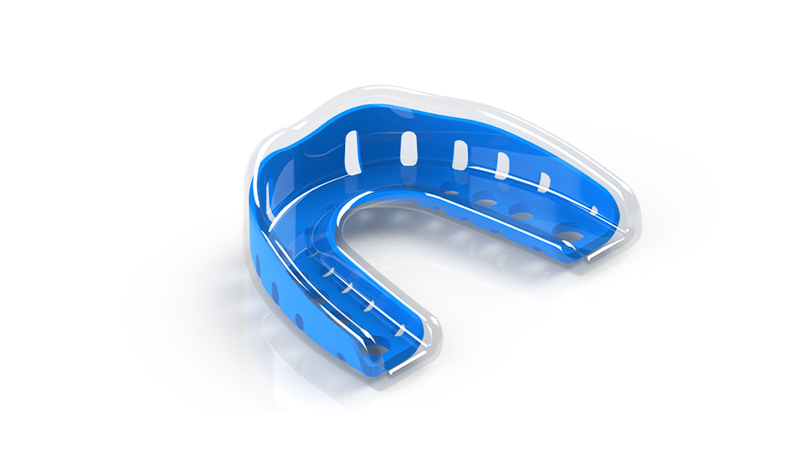Design Characteristics: The foundation of protection
The Academy for Sports Dentistry Board of Directors established guidelines that set the standard for a quality mouthguard’s design characteristics.
Here is some of what you should consider:
Comfort
A mouthguard should fit securely in your mouth without causing any discomfort. A comfortable fit ensures that the sportsperson will wear it and not be tempted to remove it during intense physical activities.
Adequate Coverage
A mouthguard should offer comprehensive coverage, protecting not only teeth but also the surrounding soft tissues.
Sufficient Thickness
The thickness of a mouthguard matters, especially when it comes to absorbing impact forces. A minimum thickness of 3mm on the biting surfaces and the outer side of the front teeth (labial) is recommended for optimal protection.
Balanced Occlusion
The bite should be balanced for even occlusal contact. This even distribution of pressure ensures that your mouthguard efficiently absorbs the energy from impacts.
Retentive Fit
A mouthguard should stay securely in place, even during high-impact moments. A retentive fit prevents it from moving or being dislodged when you need it most.
Properties of Mouthguard Material: The building blocks of protection
The material used in your mouthguard is just as crucial as its design. Key properties to consider include:
Shock-absorbing Capability
The mouthguard material’s ability to absorb impact force is vital in protecting your teeth and oral tissues from injury. Look for mouthguards with high shock-absorbing capabilities.
Hardness and Stiffness
These properties indicate how durable and robust your mouthguard is. Higher levels of hardness and stiffness equate to better protection against wear and tear.
Tensile Strength and Tear Strength
A mouthguard should withstand the rigors of physical activity. High tensile and tear strength ensure longevity and reliability.
Water Absorption
The stability of the mouthguard in a moist environment is critical. Mouthguards with low water absorption are less likely to retain saliva and oral bacteria, keeping your oral health in check.
Making the Right Choice
When shopping for a mouthguard, it’s essential to ensure that it meets these design characteristics and material properties. Investing in a high-quality mouthguard can save you from costly dental injuries.
In conclusion
A good mouthguard should offer comfort, extensive coverage, sufficient thickness, a balanced bite, and a secure fit. The material should possess excellent shock-absorbing capabilities, hardness, stiffness, tensile strength, and minimal water absorption. By considering these factors, you can select a mouthguard that not only offers superior protection but also ensures your comfort and peace of mind. Education is key to knowing what to look for in a good quality mouthguard. Understanding these design & material characteristics will help you to choose smarter to ensure you don’t compromise on your dental protection.
If you’re looking for a re-mouldable mouthguard that provides these design and material characteristics then Neomorph Mouthguard is an easy choice.

